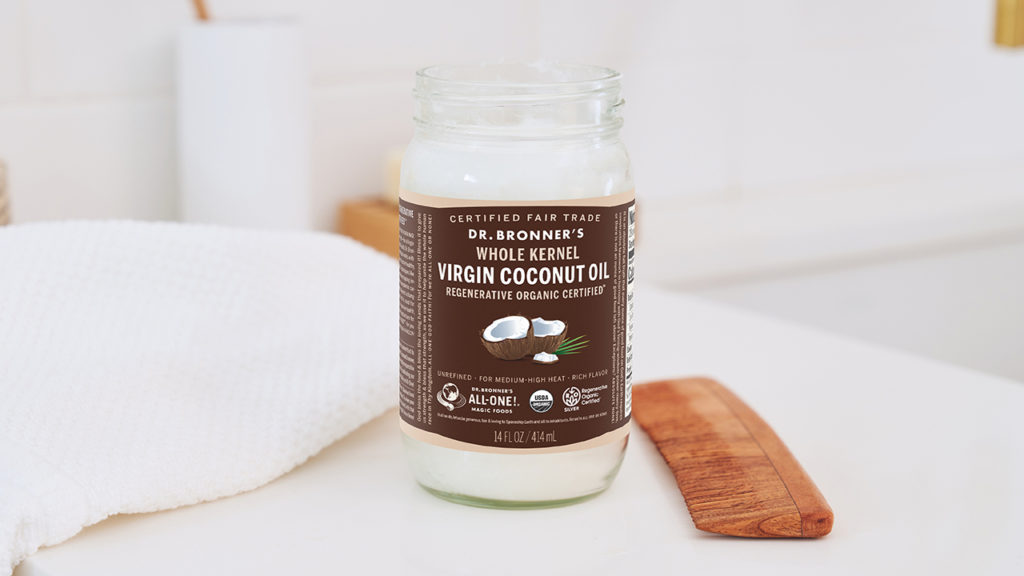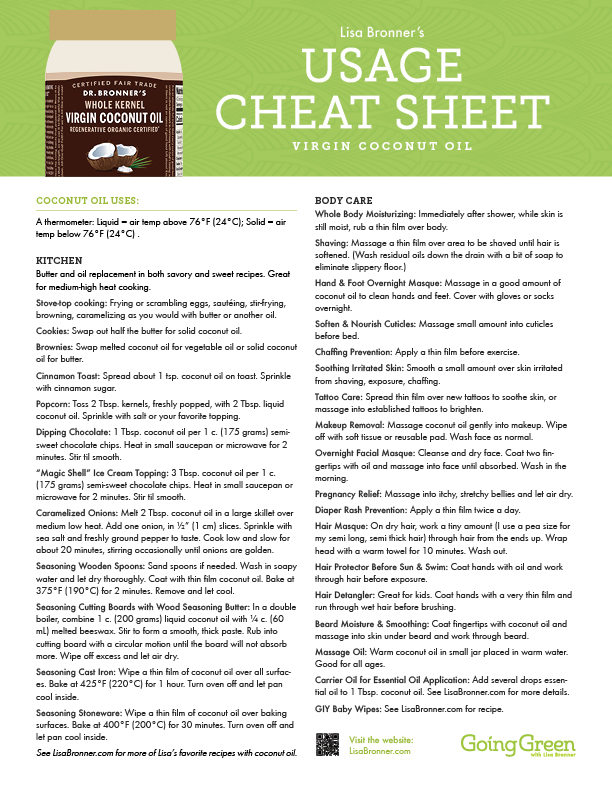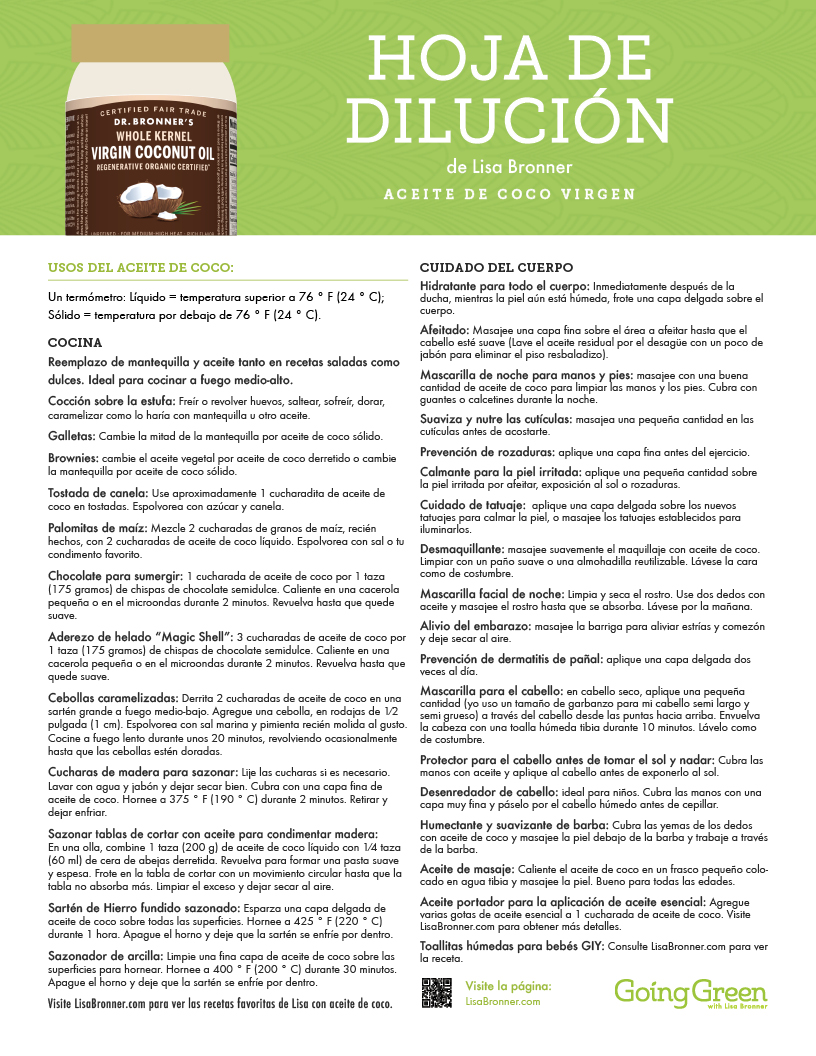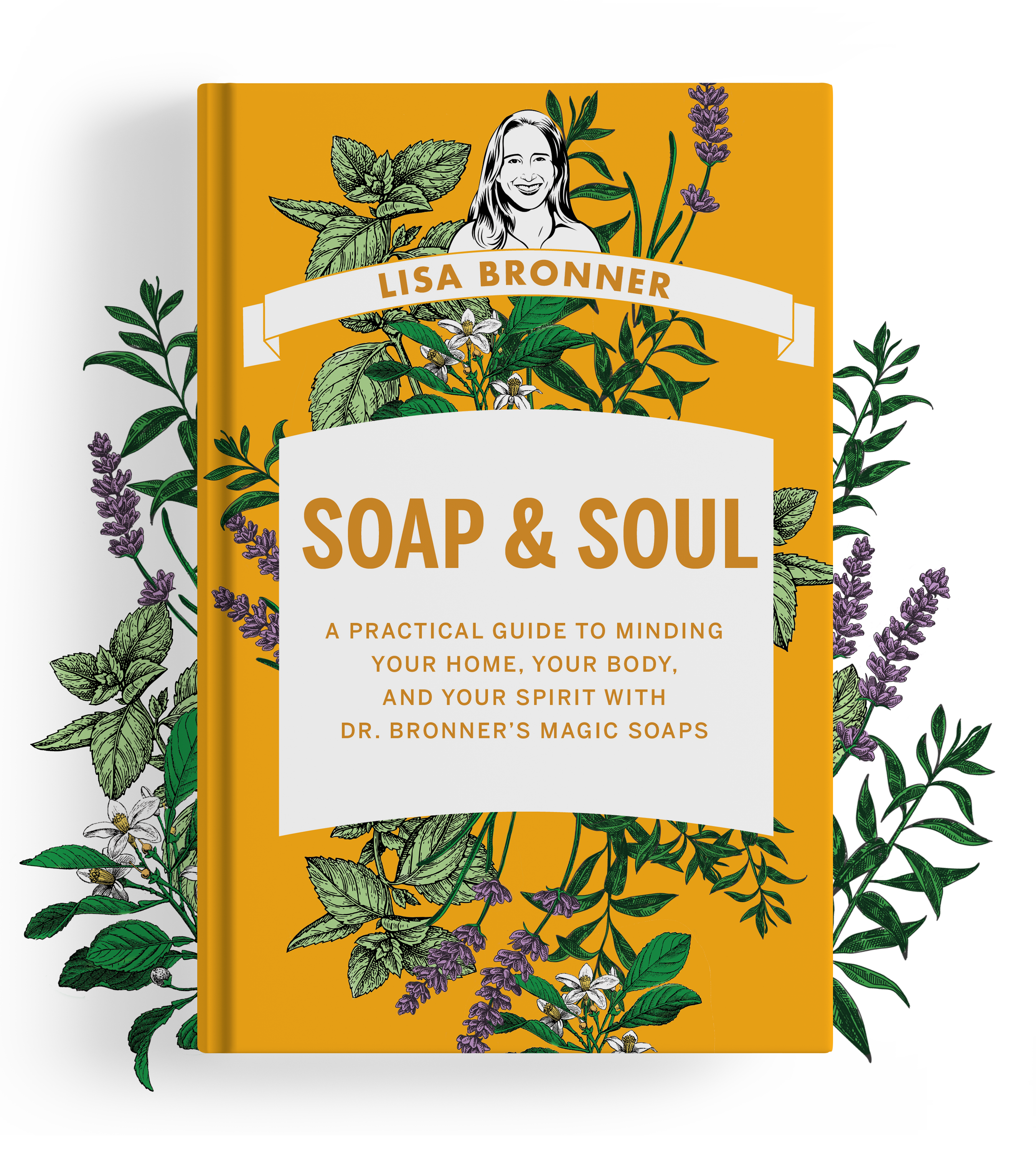
Coconut oil usage guides can sound like a high stakes auction. 20 uses! 29 uses! 77 uses! 101 uses!
I didn’t try to count mine. I’ve incorporated coconut oil into so many of my kitchen and personal care routines, and I’m always learning more. Every use on this list below are ones I use myself or have seen used successfully. I can vouch for them all.
Coconut oil has had its highs and lows in the court of public opinion. In food, it was blacklisted for a while because when hydrogenated, it contains trans fats. However, this is true of all oils when hydrogenated. Unprocessed, coconut oil does not contain trans fats. It was further blacklisted during the “all saturated fats are bad” era. However, coconut oil has shaken off these hindrances and has emerged as a strong contender among healthy oils and a great plant-based option. As with any oil, coconut oil should be consumed in moderation.
For cosmetic purposes, coconut oil also had a rocky road, becoming quite tangled up in “non-comedogenic” and its beautiful adjectival cousin, “comedogenicity.” These words were a marketer’s dream. They sound so authoritative and scientific. In general, the first word means “does not clog pores” and the second is a measure of how much something does clog pores. Sounds useful, doesn’t it?
The problem is that no scientific rating scale for comedogenicity exists, and on product labels terms like “non-comedogenic” are completely unregulated. There’s a ton of chatter in blogs and forums ranking oils by their likelihood to clog pores, but this is not underscored by independent research. I have no idea the source of the numbers assigned to various oils in the oft cited comedogenic scale. I have followed the links from blog to blog, and they always lead round and round in one big circle, with none of them citing any actual research, except for one study done in the 1970’s on the ears of rabbits, that was later refuted by its own author. My colleague Rafi Loiederman discusses the varied causes of acne and offers great suggestions in his article, “Dr. Bronner’s for Acne-Prone Skin” over on the All-One Blog.
Dr. Bronner’s Virgin Coconut Oil is pretty special, a topic I sorted through a few months ago in my post on regenerative organic agriculture. Suffice to say, this coconut oil is bringing health and healing to this planet and its people.
Let’s get down to some uses!
Coconut Oil Uses
A thermometer, of sorts! Without even opening the jar, you can make use of this feature. You can note the change of seasons by the liquid or solid state of the coconut oil! Am I the only one who does this? Since coconut oil melts around 76°F (24°C), liquid oil announces the arrival of summer. Anywhere near that point and the oil will be kind of soft and slushy. I rejoice when I see it return to its white solid state, heralding the return of cooler weather.
It does not harm the oil to shift from its liquid to solid state and back again. Coconut oil is shelf stable in your pantry, but If you prefer to keep it solid even in hot weather, store it in the fridge. To liquify solid oil, warm the needed amount gently on the stove top or place the whole jar in warm water.
Kitchen:
Coconut oil can replace butter and oils in most recipes, both savory and sweet. It is great for medium-high heat cooking, up to 350°F (177°C), such as stir-frying and sautéing, because it is composed of medium chain fatty acids, primarily lauric acid, which give it a higher smoking point. However, this smoke point is not high enough for high heat cooking like deep fat frying, which demands an oil with a smoke point around 450°F (230°C), such as palm oil – look for a sustainable source.
Stove-top cooking: Fry or scramble eggs, sauté, stir-fry, brown, caramelize as you would with butter or another oil.
Cookies: Swap out half the butter for solid coconut oil.
Brownies: Swap melted coconut oil for vegetable oil, or solid coconut oil for butter.
Cinnamon Toast: Spread about 1 tsp. coconut oil on toast. Sprinkle with cinnamon sugar.
Popcorn: Toss 2 Tbsp. kernels, freshly popped, with 2 Tbsp. liquid coconut oil. Sprinkle with salt or your favorite topping.
Caramel Sauce: Yummy on ice cream, apples, bread pudding, eating straight with a spoon. In a small saucepan, combine ½ cups coconut oil (100 grams), ¼ cups (60 mL) milk, and 1 cup (200 grams) packed brown sugar. Heat to a gentle boil, stirring constantly. Boil gently for 1-2 minutes until thickened. Remove from heat. Stir in 1 Tbsp. vanilla extract.
Dipping Chocolate: For dipping strawberries, marshmallows, bananas, cookies, or eating straight with a spoon (who, me?): 1 Tbsp. coconut oil per 1 cup (175 grams) semi-sweet chocolate chips. Heat in small saucepan or microwave for 2 minutes. Stir til smooth.
“Magic Shell” Topping for Ice Cream: 3 Tbsp. coconut oil per 1 cup (175 grams) semi-sweet chocolate chips. Heat in small saucepan or microwave for 2 minutes. Stir til smooth. Amazing Variation: Add 1 Tbsp. smooth peanut butter.
Granola: In a large bowl, add 6 cups oats (540 grams) and your favorite 3 cups (100 grams) combo of unsweetened coconut, sliced almonds (or any nuts), sesame seeds, sunflower seeds, or flax meal. In a small bowl, combine ½ cup (100 grams) coconut oil, 2/3 cup (227 grams) honey, 1 Tbsp. vanilla extract, 1 tsp. ground nutmeg, 2 tsp. ground cinnamon. Pour liquid over oat blend and toss to coat. Pour in a 9”x13” pan and bake at 350°F (177°C) for 30 minutes, stirring every 10 minutes. Cool, stirring occasionally. Stir in 1 cup (153 grams) raisins.
Caramelized Onions: Melt 2 Tbsp. coconut oil in a large skillet over medium low heat. Add one onion, in 1/2” (1 cm) slices. Sprinkle with sea salt and freshly ground pepper to taste. Cook low and slow for about 20 minutes, stirring occasionally until onions are golden.
Seasoning Wooden Spoons: Sand spoons if needed. Wash in soapy water and let dry thoroughly. Coat with thin film coconut oil. Bake at 375°F (190°C) for 2 minutes. Remove and let cool.
Seasoning Cutting Boards with Wood Seasoning Butter: In a double boiler, combine 1 cup (200 grams) liquid coconut oil with ¼ cup (60 mL) melted beeswax. Stir to form a smooth, thick paste. Rub into cutting board with a circular motion until the board will not absorb more. Wipe off excess and let air dry.
Seasoning Cast Iron: Wipe a thin film of coconut oil over all surfaces. Bake at 425°F (220°C) for 1 hour. Turn oven off and let pan cool inside.
Seasoning Stoneware: Wipe a thin film of coconut oil over baking surfaces. Bake at 400°F (200°C) for 30 minutes. Turn oven off and let pan cool inside.
Body Care:
Whole Body Moisturizing: Immediately after shower, while skin is still moist, rub a thin film over body.
Exfoliating Sugar Scrub: Combine 1/2 cup plus 2 Tbsp. (125 grams) granulated white sugar, 1/4 cup (50 grams) liquid coconut oil. Optional: a few drops of essential oils. Replace sugar with baker’s sugar for a gentler exfoliant, or raw sugar, ground coffee, or salt for a more vigorous exfoliant.
Shaving: Massage a thin film over area to be shaved until hair is softened. Another option: Mix in a touch of sugar for pre-shave exfoliation. (Wash residual oils down the drain with a bit of soap to eliminate slippery floor.)
Hand & Foot Overnight Masque: Soothes and heals cracked, toughened skin. Massage in a good amount of coconut oil to clean hands and feet. Cover with gloves or socks overnight.
Soften & Nourish Cuticles: Massage small amount into cuticles before bed.
Chaffing Prevention: Apply a thin film before exercise.
Soothing Irritated Skin: Smooth a small amount over skin irritated from shaving, exposure, chaffing.
Tattoo Care: Spread thin film over new tattoos to soothe skin, or massage into established tattoos to brighten.
Makeup Removal: Massage coconut oil gently into makeup. Wipe off with soft tissue or reusable pad. Wash face as normal.
Overnight Facial Masque: After cleansing and drying face, coat two fingertips with oil and massage into face until absorbed. Wash in the morning.
Pregnancy Relief: Massage into itchy, stretchy bellies and let air dry.
GIY Baby Wipes (great for any age): Combine 1 ½ cups (360 mL) warm distilled or filtered water, 1 tsp. (5 mL) Dr. Bronner’s Baby Unscented Castile Liquid Soap, 1 ½ Tbsp. coconut oil, warmed to a liquid, 9 drops tea tree essential oil, 4 drops lavender essential oil. Can be made with disposable or reusable wipes. See post for more details.
Diaper Rash Prevention: Apply a thin film of coconut oil twice a day.
Hair Masque: On dry hair, work a tiny amount (I use a pea size for my semi long, semi thick hair) through hair from the ends up. Wrap head with a warm towel for 10 minutes. Wash out.
Hair Protector: Use before sun and swim. Coat hands with oil and work through hair before exposure.
Hair Detangler: Great for kids. Coat hands with a very thin film and run through wet hair before brushing.
Beard Moisture & Smoothing: Coat fingertips with coconut oil and massage into skin under beard and work through beard.
Massage Oil: Warm coconut oil in small jar placed in warm water. Good for all ages.
Carrier Oil for Essential Oil Application: Add several drops essential oil to 1 Tbsp. coconut oil.
This list is far from exhaustive! Coconut oil is a versatile ingredient in many DIY personal care concoctions from deodorant to lip balm to body butters, as well as in an untold number of food recipes. I hope you’ll share your favorite uses and blends in the comments!
Further reading
- Dilutions Cheat Sheet for Dr. Bronner’s Liquid Castile Soap
- Magic Balms Usage Cheat Sheet
- Sal Suds Dilution Cheat Sheet
- Bar Soap Dilutions Cheat Sheet
This use and many more are in my book, Soap & Soul: A Practical Guide to Minding Your Home, Your Body, and Your Spirit with Dr. Bronner’s Magic Soaps, available now in hardback on DrBronner.com or at your favorite bookseller, and as an eBook and audiobook (read by me!) from wherever you download or listen.










I read on the Virgin Coconut Oil Usage Cheat Sheet to see Lisa Bronner for more details about mixing essential oils and coconut oil. I was wondering why we should ask. I did wonder if there was a way to make the coconut oil a liquid. I rather doubt that.
Hi Rebecca- You can certainly mix essential oils into the Virgin Coconut Oil. It’s a great way to get a massage oil, or to use the VCO as a carrier for any essential oil application. I am not quite sure what more needed to be asked either, though I might have said for more ideas to visit LisaBronner.com. Because the liquid or solid state of coconut oil is dependent on temperature, there is not a way to keep it liquid if the temperature is dropping. Any coconut oil on the market that is always liquid has been fractionated, which means that certain fatty acids have been filtered out in order to raise the melting point. But then, you’re losing some of the benefits of having a whole oil. It does not harm the oil to move between liquid and solid states, though perhaps it does mean an extra step for certain uses.
The links both download as Spanish
Thanks for the alert. That’s been fixed!
I purchased 2 gallons of Dr Bronner’s concentrated soap. My question is how many ounces of soap and how many ounces of water to make a 32oz bottle
Hi Kandace- Congratulations! Castile Soap is an exceedingly versatile soap – it can be used for body care and housecleaning. Take a look at my Castile Soap Cheat Sheet for all the uses and dilutions. https://www.lisabronner.com/dilutions-cheat-sheet-for-dr-bronners-castile-soap/
Thanks for the cheat sheet!!
Coconut Oil is very good for health
Is this safe to ideas a baby moisturizer beyond just diaper rash? For instance dry skin on face/hands/feet?
Hi Courtney- Yes! Great idea! Great for baby massage, too!
hola, yo lo uso mucho, en muchas cosas y para< cocinar, pero para lo q me sirvió muchísimo para controlar el malestar e mi hernia del hiato, me tomo una cucharada y mejora mucho y no he encontrado nada ni medicamento q me ayude, solo el aceite ce coco.
That’s good to hear, Hogla.
how do you stop the dogs licking it all off!?
Hi Gillian- Do you mean off of you if you use it as a moisturizer? That is not something I had considered, but it sounds like it would tickle! Perhaps use it before bed time so that it has overnight to sink in? If your pup sleeps with you, though, I can see how that would not help. Hmm. Perhaps try our lotions, which have a coconut oil base, but also have denatured alcohol, which is very bitter. Good luck!
ahem ***** also personal lubricant…..wink wink nudge nudge
Does this come in a glass jar?
Hi Patricia- Yes, both the 14 oz. and 30 oz. are sold in glass jars.
I make a scalp lotion with coconut oil, tea tree oil and apple cider vinegar to relieve itchy scalp during the winter. It’s also a must for making and cooking pancakes!
I know I will use coconut oil much more often with this cheat sheet close at hand. Thank you so much for excellent info!
Thank You and Keep up the great work, may God Bless!
Lisa, This is a valuable resource. Thank you. I love coconut oil, but don’t use it as often as I should, obviously.
Our natural health followers would benefit from your wisdom. Let me know if you would be interested in being a contributor to our 30MIL+ followers.
I love your cheat sheets! I use coconut oil for many things, and often give to my cats for hairballs. They love it! I have a DIY deodorant recipe I use that calls for coconut oil. I’ve used it for about a year and I’ll never buy deodorant again! 🙂
Hi Cheryl, just wondering if you could share your recipe for your DIY deodorant recipe? Always looking for a good natural deodorant that works.
Thanks Lisa for the ideas. I also use coconut oil to remove finger prints on my stainless steel fridge. Dip a cotton cloth (I use old sheets that I tear up into rags) in the oil, rub, then polish with a clean cotton cloth. Additionally, I make a mixture of coconut oil and baking soda and use it to remove label residue from jars.
Right back atcha, Patti! Thanks for these ideas!
There’s this do-it-yourself deodorant recipe: 1/3 c. baking soda
1/2 c. cornstarch
5 TBSP coconut oil
16 drops tea tree essential oil (less if using a purer oil)
1 | Mix baking soda and cornstarch in a small bowl.
2 | Heat coconut oil 15-30 seconds until liquefied, add tea tree oil and mix.
3 | Combine oils with powders, and store in an airtight container. Full recipe fits in a 1 cup container.
Then there’s a do-it-yourself toothpaste recipe involving remineralizing tooth powder, diatomaceous earth, clove oil and coconut oil. Mix to a texture that will stay on the toothbrush (sort of pasty). It feels good on your teeth.
Coconut oil is great for removing price and product stickers from glass, plastic, and stone surfaces! A little bit rubbed into the leftover “glue” residue makes it easy to peel or wipe off!
Excellent tip! That residual adhesive is a bear to remove!
I use it a lot for oil pulling. A tablespoon swished in the mouth for 15-20 minutes is supposed to help whiten teeth and detox your mouth. I believe it’s an Ayurvedic practice. Spit out oil when done (NOT in the sink).
I was going to mention this also!
I am so grateful for Dr. Bronner and all of his products! My son will be 45 September 23 and I have been using Dr. Bronner’s soaps before he was born!!!! I turn on everybody to this! I love that the family has continued his legacy and also brought some new products.
Hi Barbara- It’s always fun to hear from long-time customers! Thanks for sharing our soaps!
I have a question…I’ve been reading a lot about coconut oil as a mosquito repellent. I am a veritable mosquito magnet and trying to avoid using products containing DEET. Repel Lemon & Eucalyptus is ok, but I still get bitten. A friend recommended coconut oil, so I’ve read up on it, but much of the information out there is contradictory. Can you shed some light on this topic? If you have a different natural recommendation, PLEASE let me know!
Thank you!
Stephanie
Hi Stephanie – This is not a use for coconut oil I have heard. There isn’t anything inherently in coconut oil that would repel mosquitoes, unless the slipperiness of the oil would make it difficult for them to get a hold on our skin. If you wanted to try it, I don’t think it would hurt. If you do try it, please give me some feedback. As you likely know, the best mosquito prevention is covering up with long sleeves/pants, but I know that’s not always comfortable in the heat. Since I don’t live in a mosquito dense area, I’m not as full of ideas as I’d like to be. I know it’s important not to spray under your clothes and to wash it off as soon as possible.
Other readers – please weigh in with your natural insect repellent strategies!
I have used coconut oil on my legs mixed with lemon eucalyptus essential oil. (I looked hard to find that essential oil and finally found it.) I feel it helps when I wear shorts, and need to protect against bites. I get bit by no-see-ums but it seems they get caught in the oil and can’t fly off if they do dare to try and bite me.
Also, I have found plain coconut oil helps when I do get bit, it seems to lesson the “itch”. I had chiggers and I applied coconut oil on my legs and it really helped.
I use it in many different way just like the article states but an added benefit is to use it to clean your wood cabinets & dining room table & chairs if they are still in the raw wood stage.
it’s also really good at POPPING popcorn — i mix 2T olive oil + 2T coconut oil for 4T of popping corn — stove-top popper… puts the “buttery” taste right in the popcorn, just add a little salt to serve….
Hi Teri- Thanks for the delicious tip! We’ll have to give that a try on our next “movie night.”
What is the difference between organic coconut oil and regenerative organic coconut oil?
Hi Muriel- I’m glad you asked! Our Regenerative Organic Certified (ROC) coconut oil is the same as our previously named “Organic Coconut Oil. Regenerative Organic is a new standard and certification that has been put in place in only the last couple years. Dr. Bronner’s participated in its pilot audit, and as we hoped, the practices we have followed all along qualified the coconut oil for the ROC-Silver certification. The ROC standards verify that the product is grown in way that is more sustainable and healing to our planet. ROC is an agriculture certification based on regenerative organic agriculture practices which build rich soil, sequester carbon, retain and store water, provides healthy food, and creates biodiverse habitat for wildlife. You can read more about ROC in my blog article, Regenerative Merges Organic, Fair Trade & Animal Welfare at https://www.lisabronner.com/regenerative-merges-organic-fair-trade-animal-welfare/
Personally anything made with coconut Oil for me is devastating and not digestible. Including any of the vegan cheeses. I break out it makes me nauseous. I used to eat soy based cheeses. Soy Kass which all of them are gone. Which for me was easily digested. I houseclean for a living and hate coconut oil because it ruins my cleaning stuff and is a nightmare to clean off especially showers. From my research it also builds up as saturated fat in the body and really is not good for everyone. Because of the jump on the bandwagon for coconut it is now in everything organic! Here is a link that explains it. https://www.pritikin.com/your-health/healthy-living/eating-right/1790-is-coconut-oil-bad-for-you.html . I thought I was crazy about how coconut was affecting me but when I cut it out I started feeling better and my skin is slowly clearing up. And believe me compared to anyone else I eat way better. I don’t eat dairy, red meat and eat lots of vegetables.
My stomach can’t digest coconut oil, either. It’s so frustrating to read labels and see coconut oil in so many products. As a former licensed massage therapist, I found it to be great as a massage oil, warmed up. Much less expensive than most commercial massage oils, and has a much better glide on the skin. But that’s the extent of my use of it. Also, a very good hair stylist told me that she never uses coconut oil in the hair. It’s actually an ingredient in many soaps, and acts like a detergent. This jibed with with my experience of trying it in my hair (I have coarse, thick, wavy hair). Disaster! And then, it was hard to wash out. The stylist said jojoba oil or almond oil are far better for hair than coconut.
Thank you so much for this cheat sheet! And thank you for making such an amazing and safe products!
It’s also GREAT at removing leftover mineral sunscreen from face, hairline or wherever after a day in the sun.
Excellent! Thanks for sharing, Jamie!